24 hours of physical, mental and emotional pain
By Tom Corrigan
You begin the journey with bright ambitions. You’re not a hero but what you’re about to start requires a heroic effort. You’re equipped with your Nike Lunarglides – the favourite pair of running shoes you’ve had for months. Your phone is banded to your left arm and all you can hear is Dave Grohl shouting into your ears. The occasional cheer from a stranger is muffled in the background. What you’re about to start is the Cancer Council’s ‘Relay For Life’. A 24-hour charity event where one member from a team must carry their team’s baton and walk or run around the Australian Institute of Sport’s athletics track. The event is open to everyone and teams consisting of 10 to 15 people register for the emotionally charged fundraiser.
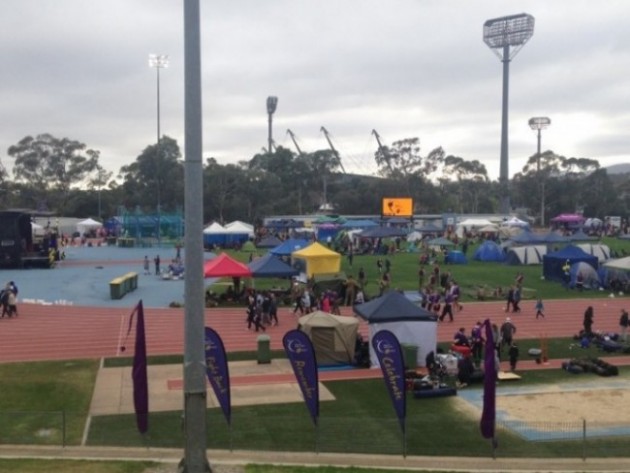
After the first lap that everyone completes, you’ve pulled the shortest straw for the first shift. It could be worse, if you argue that you had to do the first shift, you’re less likely to end up walking the 2am shift. As you begin your lone venture around the AIS track, you overhear someone say this is like Frodo’s first steps to Mordor – the perfect metaphor. Since it’s the start of the event, you’re full of adrenaline and excitement and think, “I’m going to run a few laps!” This isn’t the smartest idea you’ve ever had. You burn out quicker than a car at Summernats. However, you eventually find a decent walking pace and you’re set on your way. A thousand pairs of feet collectively pound the red AIS track. The track encloses the greenest of grass but the hundreds of tents set up to accommodate each team squash almost every blade.
You overhear a young boy already complaining about sore feet. Little does he know he’s a small but vital part of an event founded 31 years ago by Dr. Gordy Klatt in the USA. Dr. Klatt wanted to raise money and awareness for cancer so he walked for 24 hours on a track. More than three decades later, thousands of people worldwide emulate his effort. The boy wearing Bart Simpson runners is participating in an event that’s been in Australia since 1999. The North Canberra Relay is one of more than 200 across the country.
The motivation behind participating in Relay varies from person to person. Multiple teams have photos of those that have lost battles with cancer and you’re reminded of this on each lap. Whilst it initially seemed somber, it turned into something uplifting because everyone is putting his or her body through physical and mental tortures in memory of those who have passed and in support of those who are fighting. A camp near the starting line is walking for Jack, a six-year-old AFL fan that passed away in January. The team’s baton is Jack’s AFL football that was consistently bounced on the track for 24 hours. The other batons on the track ranged from the thoughtful to the unconventional. One team used a teddy bear belonging to a young girl who survived leukemia whilst another used a black cape and light saber from Star Wars. A team remembering a Sydney Swans fan used a red and white scarf as their baton and another team used a pixelated cardboard baton because they’re walking for a teenager who loves Minecraft. Your team’s motivation is not just because they are a survivor or carer, but also because they want to raise money for a good cause. They each set an amount of laps they want to complete before 10:00am tomorrow when the event finishes. Your target is 100 laps.
During one of your afternoon shifts you remove the music from your ears. As the lyrics to “Ocean Drive” by Duke Dumont fade away all that can be heard is the thumping of feet and the chatter of those who own them. The smell of a barbecue takes control of your mind, and it’s having the same affect on everyone around you. Food, drink and merchandise are for sale, with all the funds going to the 130,000 that will be diagnosed with cancer this year.
In 2003, Margarete was one of those unlucky ones to be diagnosed with cancer. Hers was called ‘chrondoblastic osteogenic sarcoma of the mandible’. In simpler terms, it’s a rare and aggressive malignant bone cancer that showed up on the right side of her jaw. Typically found in the longer bones (arms and legs) in children, but rarely found in the jaw. She still remembers the day she was told. After assuming a fish scale was wedged between her tooth and gum, and a resulting trip to her dentist, she was referred to a maxiofacial specialist who took a biopsy. Days later the specialist called Margarete to inform her of the results. The words uttered through the phone remain with her to this day. “This is the worst news we could expect,” the doctor said. “It’s a rare and aggressive bone cancer and we have to operate”.
The exact moment Margarete was told she had cancer is a moment she will never forget. It was Thursday the 27th of November 2003. “I remember where I was,” she says, “I remember the doctor telling me what I had, and I thought “I’m not going to make much sense anymore if anyone talks to me from this point in time. I actually remember telling the doctor to ring my husband because I didn’t think I could do that. And then I cried a lot”.
Being fearful of the future is something that plays on the mind of a cancer patient and it was a feeling that was all too real for Margarete. “Internally I was very scared. People had said this was serious and if it had already spread, then that’s it, they wouldn’t bother operating, I’d be dead in six months”.
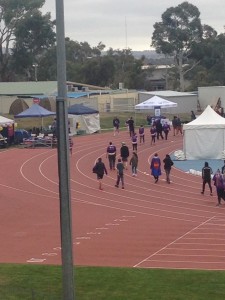
On the 6th of December 2003, Margarete underwent surgery to remove the cancer, which involved removing half her lower jaw. Thankfully for her, her husband and two children, the 15-hour operation was successful. However, over the following weeks, her left fibula that was used as a bone graft failed. As a result she only has one bone in her lower left leg – the tibia. In subsequent operations spread over a number of years, one of her ribs was used to reshape the right side of her jaw. After time a second rib was added to further strengthen it.
From the 6th to the 23rd of December, Margarete remained in hospital. The first week spent in intensive care. The inability to move or speak took a colossal mental toll. The nights in particular, as any patient will say, were the worst. “Some nights in hospital you would think that you’re all alone in the world,” she reflected. “It seemed like minutes would take hours to go past. It was so lonely, it was upsetting”. Hope was a driving factor for her ability to survive the 17 days in hospital. “This is the moment when you need to have hope, and I don’t know if I felt particularly hopeful at that time,” she said. “But it was good that a few years after that I was able to then know there was hope and I wished I knew there was more hope when I was first going through it”.
Hope is one of the largest themes at the Relay For Life. Everywhere you look you’re reminded by it. “Hope Lives Here” is written on the shirt of every participant. At night, the track is lined with candles that rest gently inside paper bags. Each bag has a message of hope on the front written by the individual that purchased it.
One of the beautiful things about the Relay For Life is that anyone can do it. There are no age or fitness requirements. The inside running lanes were shared between the marathon runners that never stopped and the overweight pushing themselves to run the extra lap. The walking lanes were simultaneously populated between baby boomers, generation X and generation Y. Parents pushing strollers walked alongside the group of teenagers.
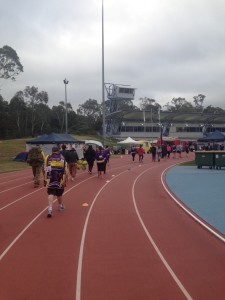
As the sun falls so does the temperature. The orange glow from the Relay clock replaces the orange glow from the sunset. 15 hours to go. The numbers on the track slowly diminish. Groups of 5 become 1. The queues at the food trucks and hot water stations grow and there’s an abundance of people walking back to their tents with instant noodles – its scent filling the air.
At 3:00am, with seven hours before the strenuous ordeal is over, you begin to wonder why you’re doing this. You’re not a cancer survivor and you haven’t cared for someone with the dreadful disease. The only reason you’re doing Relay is because you thought it’d be fun to do with your friends. All you can think of is how much sleep you’re likely to get, if any, and you’re trying to ignore the pain in your legs that’s shooting up from your feet with every step you take. As you complete your 75th lap the motivation to continue is all but gone. What strikes you though, is the countless amount of volunteers that are more than happy to help in the stupid hours in the morning. When more than half of the participants are curled up in their tents, the volunteers are manning their stations with beaming smiles to anyone who visits them. The guy pouring coffee from his van has been doing so for hours and the woman at the phone charging station has had hundreds of iPhones pass through her hands. The ladies behind the barbecue have cooked thousands of bacon and egg rolls and those in the first aid tent have attended to the needs of hundreds. If the volunteers are assisting the thousands of people here and not complaining then what’s your excuse? Ultimately, you have none. This pushes you to complete a few more laps. By now the soles of your shoes that were once white are brown from a mixture of dirt and the red from the track.
Those who are brave enough to run during the cold hours of the morning continue to do so for a number of laps. It’s much quieter on the track now, only a tenth of the people who walked or first lap are on the track now. You strike up a conversation with Brian, a man in his forties. You’ve been running alongside each other for a while now, occasionally rotating who is in front of the other. Soon enough you’re both exhausted and walk a few laps instead. Brian tells you he’s donated a lot more than he anticipated. He jokes that his team have an agreement where they donate a dollar for every incorrect NRL tip they make. “I’ve learnt to not tip the Sydney Roosters,” he laughs.
You finally get some sleep but it’s only for a couple of hours. The chatter on the track two metres from your makeshift bed wakes you. There’s some colour in the sky when your eyes open. It must be early morning. The piercing glow is still emitted from the Relay clock but this time it reads 6:24am. Just over 3 and half hours remaining. 17 laps need to be completed before you reach the century milestone. The team is focused on reaching their goals and majority is on the track. However, morale is at the lowest it has been. Most are functioning with no breakfast and less than three hours sleep; the lucky ones managed to get four or five. Your friends are snapping at each other and a number of arguments end in, “Whatever, I’m going for a walk”. A handful of your team notices the pointless fights between everyone and your objective changes from completing laps to keeping the peace in the group. As more of the team completes their targets the morale improves. When you reach your metaphorical holy grail they come off the track covered in hi-5s and acclamations. With 40 minutes left, your team as a whole completes their 1000th lap.
The Relay is one of the most physically, emotionally and mentally draining things you’ve done but despite the pain it occasionally brought it was enjoyable. The 40 kilometres you collectively walked or ran is a distance you’ve never covered before and it’s something you would do again in a heartbeat. Your Lunarglides are torn apart, Dave Grohl still shouted in your ears but you and your team produced a heroic effort.

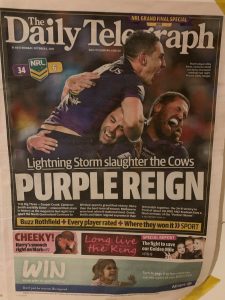
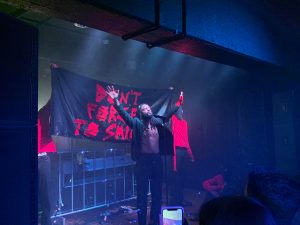

Be the first to comment!